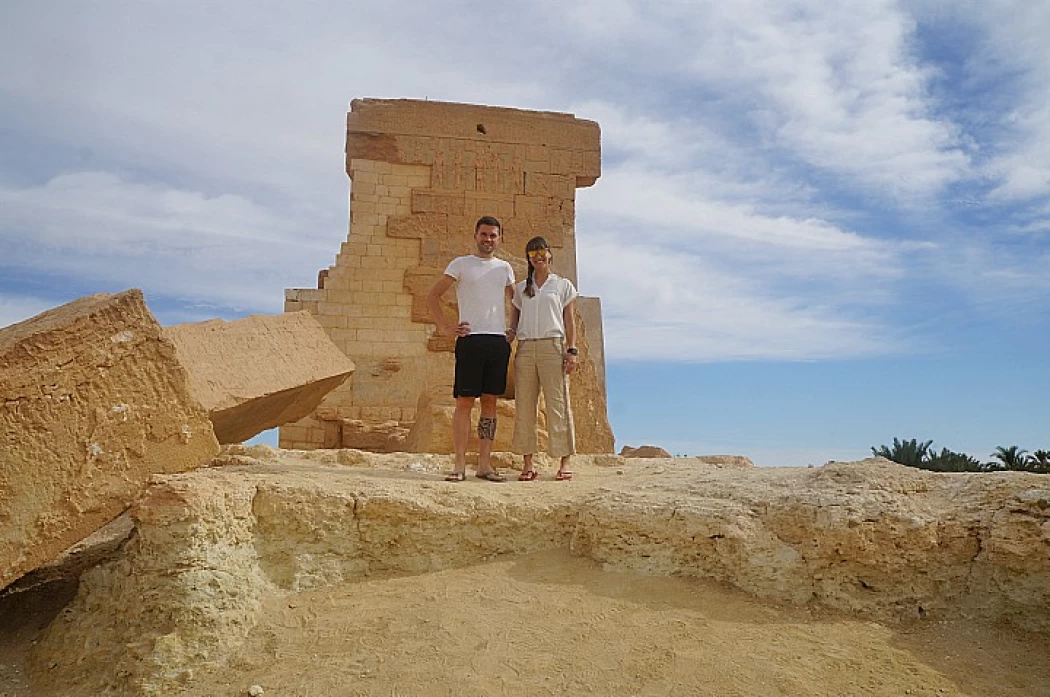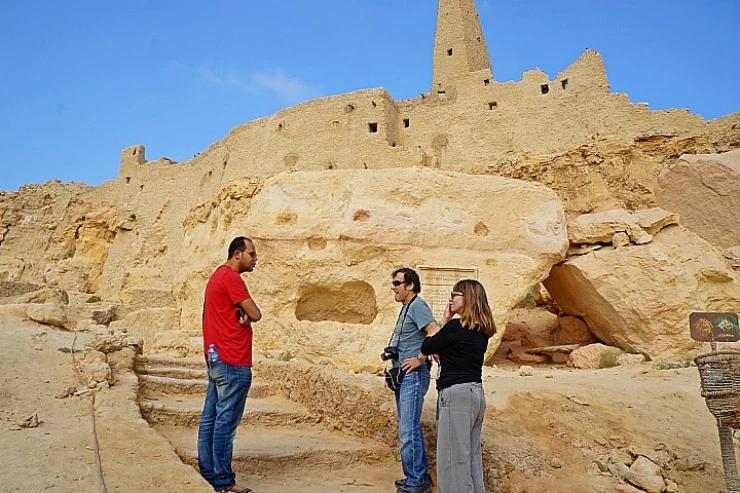
Temple of Amun Ra , Um Ubaida Temple
The Temple of Amun Ra in Siwa Oasis: Oracle of the Desert
The Temple of Amun Ra remains concealed in Egypt's Siwa Oasis distance since it functions as a holy structure that celebrates divine monarchy and prophetic powers alongside sacred spiritual beliefs from antiquity. The temple serves as one of Siwa's most famous landmarks while residing deep within Western Desert palm groves and salt lakes; it is a central component of Egyptian connections with divinity.
A Desert Sanctuary of the Divine
The Temple of Amun Ra, commonly referred to as the Temple of the Oracle, came into existence during the 26th Dynasty (c. 6th century BCE). The temple paid homage to Amun Ra as the highest sun god of ancient Egypt, who conveyed divine messages through his oracles from sacred locations. The temple in Siwa obtained status as a premier prophetic site throughout the Mediterranean region that equaled the power of the Delphi oracle of Greece.
The temple complex existed before modern Siwa town, where Aghurmi served as its base. Today's site preserves its mysterious nature most intensely during the times of dawn and dusk since the golden tones of the stones stand out against the surrounding desert.
Alexander the Great’s Sacred Visit
The Temple of Amun Ra at Siwa gained its fame from the sacred encounter with the great warrior Alexander the Great. During his Egyptian conquest in 331 BCE, Alexander made a difficult desert crossing to speak with the oracle. The oracle identified him through divine revelation as both pharaoh of Egypt and son of Zeus-Amun to establish his leadership position throughout the empire.
The oracle declared Alexander to be the divine child at the end of his sacred visit to the oracle, which fulfilled his religious goal. The prophecy given to Alexander by the oracle remains hidden since he chose to keep all the words to himself.
Architecture and Features
Parts of the temple remain visible after both wear and tear and a 19th-century earthquake partially destroyed it.
The Oracle Room stands as a divine chamber where priests used to hear and pass along the divine messages from The God.
The temple's majestic stature is hinted at by stone inscription carvings that still exist in barely visible motifs.
At the summit of Aghurmi Hill, visitors can admire three elements of a unique sight: date palm forests combined with salt lakes alongside desert horizons, which have remained unchanged since the time of the ancients.
A Legacy of Mysticism and Myth
Visitors frequently choose the Temple of Amun Ra as one of their prime stops as they tour the site for its historical value and its enchanting connection with everlasting forces. The site demonstrates how Egypt's sacred religious customs unite with the everlasting desert enchantment.
Visitors to Siwa frequently feel a deep sense of awe in front of the temple because its mystical quietness communicates that the gods used to speak from this site.
Siwa is the westernmost Oasis in the Egyptian desert, only 30 kilometers far from the Libyan borders in the heart of the great sand sea.
The Temple of Amon or also known as the Temple of Umm Ubayd constructed during the 30th dynasty, only a wall decorated with bas-reliefs and a gigantic pile of ruins remains. The temple was built by Nectanebo II.
The Temple of Amun is one of the oldest temples in the world, it is located 4 kilometers east of the current city of Siwa during the reign of the Thirtieth Dynasty by "Nectanebo II"
Unfortunately, one of the high officials 1897 blew the temple up to use its stones to build a staircase for the police station and a house. All that remains are ruins of broken stones and inscriptions in the Greek language, mostly written by travelers in ancient times.















